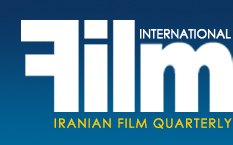|
Afghan Cinema, Yesterday and Today
Between the Light and the Shade
by Eltefat Shokri-Azar
|
King Amanollah Khan brought back a film projector from a visit to Europe where his first encounter with cinema took place in 1928. The projector was put at the royal court's citadel where princes and other courtiers used it to watch silent movies. Later, more projectors were installed at Cinema Naman and Cinema Kabul, both converted from theaters into movie theaters, where they showed Indian, British and American films. Silent films were shown while a musician, Ostad Gholam Hoseini, an Afghan musical genius, played the piano live but from behind a curtain to mesmerize viewers. Cinema arrived in Afghanistan in the same way that Indian music found its way into the country. It was Amir Shir Ali Khan in the 13th century who brought it from India and brought about a turning point in the history of art in Afghanistan. He even brought with him a complete Indian orchestra. However, this almost put an end to Khorasani (Iranian) style of music which was popular in Afghanistan. The success of this music changed the course of history of art in Afghanistan in a way that Afghans first experienced sound movies with Indian films. Nevertheless, Afghanistan is nicknamed “Land without Image” while cinema is the most significant visual medium of modern day. Watching a few Afghan films would be a unique experience. There is nothing new in Afghan films as far as technology and motifs are concerned. Storytelling, techniques and acting were copied from Indian cinema. Filmmakers in Afghan cinema and TV have so far simply repeated stories that have been told a thousand times. On the other hand, Afghan viewers do not expect much from a movie. They do not know another form of films. The absolute domination of Indian films and pre-revolutionary period Iranian movies has left its mark on Afghan films.
Before the civil war, there were only 45 movie theaters in 32 provinces for some 17 million viewers. Thirteen of these movie houses were in Kabul. In 1973, the government of Zahir Shah nationalized Afghanistan's film industry although the government produced only one film in that year: Difficult Days (Wali Latifi). It was easier for the government to import films rather than producing them. It was a small market and there were fewer risks involved in importing.
Samad Asefi, a former photographer and filmmaker who was active in Iqbal Film was in charge of supporting independent Afghan films. He was one of the producers of the movie Rabia Balkhi (1974). Some Iranian film distributors were interested in purchasing that film. At a banquet attended by Asefi Mohammad Nazir who was one of the actors and producers of that film, he had a heart failure and died. The contract was not signed and the film never found its way into foreign markets. The next film to be made by the government, Tora (Toryali Shafaq) never got the go-ahead from the government.
They have produced more coups than films in Afghanistan! Zahir Shah was toppled by Daud Khan (1973) and Daud Khan was ousted by Nur Muhammad Taraki (1978). Later, Hafizullah Amin toppled Taraki in September 1979. Amin was toppled by Babrak Karmal in 1980. The only Afghan film of that year was The Slave of Love (Toryali Shafaq). Another movie, Siamoi and Jallali (Abbas Shaban), was screened in 1980 and the production of Funny Akhtar which had started in 1979, was stopped. At the same time, the newly established Gulistan Film started to produce House No. 555. The state-owned Afghan Film also resolved to produce an epic film by the name of Tora which was supposed to be made earlier but was abandoned.
A Soviet-style revolutionary cinema had taken shape in Afghanistan under Communism that resembled the cinema of Chile and Cuba. A few years later, several film production companies were launched in Afghanistan including Ariana Film, Aparsin Film, Shafaq Film and Afghan Film. The latter planned to produce a co-production with the Soviet Union while other companies also started to produce and distribute films. Aparsin produced Afghanistan's first 35-mm movie in color, Looters, and had plans to produce two more. Ariana Film, whose manager was Latif, was also active, but Funny Akhtar remained inconclusive. Afghanistan's state-run TV started broadcasting in color on its only channel in 1978.
Soviet assistance was under way to build the infrastructure of Afghan cinema, but it was interrupted by the war. One of the plans was to build a major studio and lab. All that remains from that plan is a model left at the office of Afghan Film.
[Page: 50]
|
|
|
|
|
President & Publisher
Massoud Mehrabi
Editors:
Sohrab Soori
Translators:
Sohrab Soori
Behrouz Tourani
Zohreh Khatibi
Contributors
Saeed Ghotbizadeh
Mehrzad Danesh
Advertisements
Mohammad Mohammadian
Art Director
Babak Kassiri
Ad Designers
Amir Kheirandish
Hossein Kheirandish
Cover Design
Alireza Amakchi
Correspondents
E.Emrani & M. Behraznia (Germany)
Mohammad Haghighat (France)
A. Movahed & M. Amini (Italy)
Robert Richter (Switzerland)
F. Shafaghi (Canada)
B. Pakzad (UAE)
H. Rasti (Japan)
Print Supervisors
Shad-Rang
Noghreh-Abi
Gol-Naghsh
Subscription & Advertising Sales
Address: 10, Sam St., Hafez Ave., TEHRAN, IRAN
Phone: +98 21 66722444
Fax: +98 21 66718871
info@film-magazine.com
Copyright: Film International
© All rights reserved,
2023, Film International
Quarterly Magazine (ISSN 1021-6510)
Editorial Office: 5th Floor, No. 10
Sam St., Hafez Ave., Tehran 11389, Iran
Printed in Tehran
Publishing Date Winter 2011
*
All articles represent views of their
authors and not necessarily
those of the editors
|
|
|

